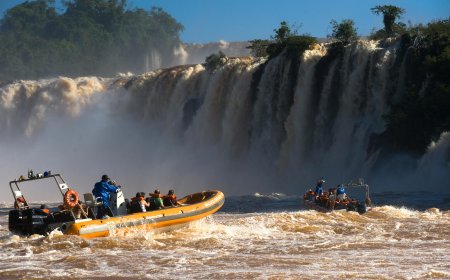Survival equipment assembly
Survival equipment assembly is a comprehensive and vital process for preparing for emergencies and effectively dealing with harsh conditions. This preparation involves gathering a variety of tools and essential materials that help to stay safe and secure in challenging environments and during natural disasters or emergencies. This equipment includes food and fresh water, lighting and communication tools, portable shelters, basic medical supplies, and other vital items. In short, assembling survival equipment ensures comprehensive readiness and preparedness for any emergency situation that may arise.

Survival equipment assembly is a comprehensive and vital process for preparing for emergencies and effectively dealing with harsh conditions. This preparation involves gathering a variety of tools and essential materials that help to stay safe and secure in challenging environments and during natural disasters or emergencies. This equipment includes food and fresh water, lighting and communication tools, portable shelters, basic medical supplies, and other vital items. In short, assembling survival equipment ensures comprehensive readiness and preparedness for any emergency situation that may arise.
Survival equipment assembly
Assembling survival equipment is vital for preparing and being ready for emergencies and harsh conditions. These tools constitute the first link in the preparedness chain for any emergency situation, whether it's a natural disaster or unexpected circumstances.
The first step in assembling survival equipment is identifying basic needs. These include food, water, sources of heat, and shelter. Therefore, these essentials should be at the forefront of the equipment list.
For food, storing long-term supplies such as pasta, rice, grains, and dried legumes, along with calorie-dense canned foods, is essential. Also, consider non-perishable foods that require no cooking.
Regarding water, sufficient quantities of clean water for drinking and daily use should be provided. Storing water in containers designed for long-term storage is preferable.
It's also important to think about providing sources of heat, such as thermal blankets, candles, portable heating devices, and rechargeable batteries, to ensure continuity in cold conditions.
For shelter, identifying a safe place to take refuge in emergencies, whether at home or elsewhere, is crucial. Portable tents or underground locations can be options for shelter.
Assembling survival equipment requires comprehensive consideration of the basic needs for survival and safety in emergency conditions, ensuring the availability of these equipment and resources continuously and up-to-date.
How to Choose the Right Tools
When selecting the appropriate tools for assembling survival equipment, it's crucial to first identify individual needs and the expected circumstances that individuals or groups may encounter during emergencies. Then, you can begin selecting tools and equipment that suit those needs.
Consider tools that meet the basic needs for survival, such as tools for nutrition, water, lighting, protection, and communication. For example, these tools may include:
1. Water storage tools: such as water bottles and containers designed for water storage.
2. Food storage tools: such as airtight storage containers and portable food bags.
3. Lighting tools: such as handheld lanterns, candles, and portable LED lamps.
4. Protection tools: such as thermal blankets, warm clothing, and protective masks.
5. Communication tools: such as wireless radios and powered mobile phone devices.
After identifying the essential tools, review the available budget and consider the quality and durability of each tool before purchasing. It's preferable to choose high-quality equipment that can be relied upon in emergency conditions.
There are also other factors to consider, such as weight and size. Tools should be easy to carry and store, especially if the emergency situation requires continuous transportation.
Choosing the right tools for assembling survival equipment requires careful consideration of individual needs and expected circumstances, as well as reviewing budget and quality before making the final decision.
The Importance of Survival Equipment in Emergencies and Disasters
In emergencies and disasters, survival equipment becomes vital for staying safe and ensuring personal safety. These tools play a crucial role in providing essential supplies and protection from potential risks.
First and foremost, survival equipment provides means to access food and clean water, which is of utmost importance for survival. In emergencies, water and electricity distribution services may be disrupted, making access to food and fresh water vital for survival.
Secondly, survival equipment provides means for protection and security against harsh weather conditions and potential environmental hazards. For example, these may include thermal blankets, warm clothing, and portable tents to provide shelter from extreme cold or heat.
Thirdly, survival equipment provides means of communication and connection with others, which is necessary for seeking help and coordinating with relevant authorities during emergencies. These may include wireless radio devices and mobile phones.
Overall, survival equipment is an essential part of individual and community preparedness for dealing with emergencies and disasters. It helps provide essential supplies and personal protection, enhancing the ability to adapt and survive in unfamiliar and challenging conditions. Therefore, everyone should have a set of survival equipment available and ready for use whenever necessary.
How to Assemble Survival Equipment on a Limited Budget
Assembling survival equipment on a limited budget poses a challenge for many people, but it is possible with careful planning and maximizing the use of available resources.
1. Prioritize Needs: Before starting to gather equipment, it's essential to identify the basic necessities for survival. This includes food, water, protection from the elements, and lighting.
2. Look for Deals and Discounts: Taking advantage of sales and discounts can save a lot of money. Browse local stores and online websites to find good deals on necessary equipment.
3. Negotiate and Bargain: In some cases, negotiating with traders or sellers can lead to additional discounts on prices, especially if purchases are made in large quantities.
4. Seek Low-Cost Alternatives: If expensive equipment is not affordable, explore low-cost alternatives. For example, instead of purchasing expensive handheld lanterns, inexpensive candles can be used as alternatives.
5. Utilize Available Resources: Look for resources available for free or at low cost, such as government assistance programs, charities, or equipment donation programs.
6. Invest in Multi-Purpose Equipment: Maximize the use of purchased equipment by choosing tools that can be used in multiple areas. For example, a multi-purpose knife can be used for food preparation and can opening.
By using these steps and strategies, individuals can assemble survival equipment on a limited budget and be prepared to face emergencies efficiently and effectively.
Practical Steps for Assembling Survival Equipment in Your Home
Assembling survival equipment in your home can be a crucial and vital process to prepare for any emergencies that may occur.
1. Identify Needs: Determine the essential needs for survival in your home. This includes food, water, sources of heat, lighting tools, and basic medical supplies.
2. Make a List: Prepare a detailed list of the equipment you need, specifying the quantity of each item.
3. Proper Storage: Find a suitable place to store survival equipment in your home. Cabinets, shelves, and storage boxes specifically designated for this purpose can be used.
4. Purchase Equipment: Buy the equipment according to the list you've prepared. Try to choose high-quality, durable equipment that can be relied upon in emergency situations.
5. Emergency Stockpiling: Store additional quantities of food, water, and other essentials in a separate, easily accessible location for emergencies.
6. Regular Equipment Inspection: Ensure to regularly inspect and test the equipment to make sure it's working properly and ready for use in emergencies.
7. Provide Training: Provide training for family members on how to use the equipment and how to act in emergency situations. Make sure everyone understands how to use each piece of survival equipment.
By following these practical steps, you'll be able to effectively assemble survival equipment in your home and prepare yourself and your family for any potential emergencies.
Assembling Survival Equipment for Traveling and Outdoor Adventures
Assembling survival equipment for travel and outdoor adventures requires careful planning and preparation to face the challenges that may arise in wilderness environments.
1. Analyze the Environment: Study the environment you plan to travel to, including weather, climate, geographical features, and potential hazards.
2. Identify Needs: Determine the essential needs for survival during the trip, such as food, water, shelter, and basic medical supplies.
3. Choose Appropriate Equipment: Select equipment that suits the type of trip and environment, such as tents, cooking utensils, water purification tools, and portable lighting equipment.
4. Learn and Train: Learn how to properly use each piece of survival equipment before the trip, and practice using them effectively.
5. Pack Smartly: Pack the equipment in an organized and intelligent manner in designated bags, and ensure even weight distribution to facilitate carrying during the trip.
6. Plan for Emergencies: Prepare a detailed emergency plan that includes procedures to be followed in emergencies such as loss of communication or injury.
7. Regularly Review and Update Equipment: Regularly inspect and update survival equipment to ensure its readiness for use, and replace any damaged or expired items.
By following these steps, you can effectively assemble survival equipment for travel and outdoor adventures, ensuring your safety and the safety of your group members, and enjoying the trip experience with confidence and security.
Preparing for Any Emergency
Preparing for any emergency involves several aspects, including assembling survival gear.
1. Risk Analysis: Analyze potential risks you may face, such as natural disasters, health emergencies, or environmental disasters.
2. Assessing Needs: Identify the basic necessities for survival during emergencies, such as food, water, shelter, lighting, and medical supplies.
3. Equipment List: Prepare a detailed list of the equipment you need to face emergencies, specifying the quantities required for each item.
4. Purchasing Equipment: Buy equipment according to the list you've prepared, aiming to choose high-quality, durable gear that can be relied upon in emergency situations.
5. Proper Storage: Store the equipment in a suitable, easily accessible place for emergencies, ensuring that appropriate containers are provided for proper storage.
6. Training and Learning: Learn how to use each piece of survival equipment correctly, and practice using them effectively before emergencies occur.
7. Regular Update and Inspection: Regularly inspect and update the equipment to ensure its readiness for use, replacing any damaged or expired items.
8. Emergency Planning: Prepare a detailed emergency plan that includes the actions to be taken in emergencies, and make sure to share it with family members or team members.
By following these steps, you can comprehensively prepare for any emergency, and assemble survival gear in an effective manner to ensure your safety and the safety of those around you during emergency situations.
Summary
Assembling survival gear is vital for emergency preparedness and harsh conditions. This includes identifying basic needs such as food, water, shelter, lighting, and protection. Equipment should be carefully purchased according to a pre-prepared list, emphasizing quality and durability. Storing equipment systematically and preparing for emergencies by developing a detailed plan and training family members on proper equipment use are essential steps. Therefore, assembling survival gear can provide security and readiness to confidently and effectively face any emergency.
Sources
1. Federal Emergency Management Agency (FEMA) Website
- The official website of the Federal Emergency Management Agency provides comprehensive information on how to prepare for emergencies and assemble survival gear.
2. American Red Cross Website
- Offers useful information and tips on preparing for emergencies, including assembling survival gear.
3. NASA Website
- Provides information on emergency preparedness, including assembling survival gear in the context of space and harsh environments.
What's Your Reaction?



































































































































































